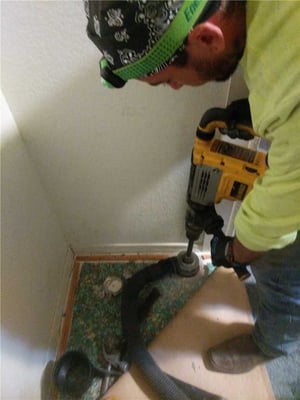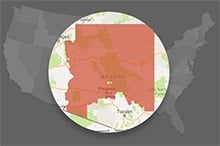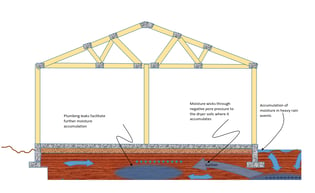MoistureLevel® for Foundation Heave
Soil Venting: Under Slab Moisture is no match for MoistureLevel®!
 While foundation heave and expansive soils can be difficult to diagnose, it is important to prevent these issues by eliminating soil moisture.
While foundation heave and expansive soils can be difficult to diagnose, it is important to prevent these issues by eliminating soil moisture.
Luckily, Arizona Foundation Solutions has developed the MoistureLevel® Smart Foundation System, which was designed to alleviate expansive soils beneath concrete slab foundations!
Long-lasting moisture protection
The MoistureLevel® Smart Foundation System has protections to minimize any over-drying near the footing area. It also has a smart mechanism that monitors the soil moisture content and regulates the drying to protect from over-drying.
The system is easy to install, usually taking less than a day. MoistureLevel® is also the more affordable option, costing 1/10th less than other, faulty heave control methods and have the following benefits:
- It controls the moisture of clays under the slab on a continuing basis, providing better long-term confidence than other repair methods
- It regulates your home's indoor air quality, reducing ground-penetrating pollutants like Radon and other harmful gasses
- It prevents wet slab issues, including delaminating tile, mold growth, and slab curling
- Since it removes moisture from underneath the slab, there is also unconfirmed evidence that it also prevents termites
Arizona Foundation Repair™ Experts!
______________________________________________________________________________________________________________________________________________________
How does moisture accumulate under a foundation slab anyway?
Suction - Clay soil has a negative ionic charge. Water has a positive one. As a result they are attracted to each other. Geotechnical engineers refer to this as negative pore pressure.... or suction. Although water moves very slowly through clays at about 3 inches per year, the horizontal depositional layers in the soil allow for somewhat faster movement. During heavy rain water soaks down to the soil below and because the soil in the center of the slab is much much drier, it is attracted to it. Even if the sun comes out an dries the soil where it was initially soaking wet, it will not dry it enough to reverse suction… Thus each event has accumulating effect.
Temperature - With the inside of the house air conditioned, the soil under the slab in the center areas is much cooler than the soil on the outside of the house. Particularly as the sun beats down on it. The differential can be as much as 100 degrees. Claudia Zapata PhD, Professor of Geotechnical Engineering at Arizona State University, has conducted several studies documenting the effect of water accumulating to cooler soils.
The Stack Effect - Radon Scientists have documented the stack effect for many years. As hot air rises to the attic, and exits the vents, it is replace with air and gasses from the lower portions of the structure. Particularly through the foundation from the soil under it and around it. The stack effect has been documented to pull Radon (a radioactive gas) into the structure from as far away as 20 feet from the house’s perimeter. Water vapor is a gas as well and follows the same path. Except as water reaches the cooler interior soils, it cools and condenses. As it does so the molecule grows significantly as is undergoes transformation from a gas to a liquid. Thus it is unable to follow other gases into the interior of the home, but is trapped under the slab where it accumulates.
Thornthwaite Effect - This is a complicated Geotechnical concept of evapotranspiration that allows for the upper movement of water vapor from the water table, and other underground sources of water. This is easily demonstrated by burying plastic and noting the accumulation of water under the plastic. These 4 methods not only contradict the concept of the dissipation of water under the floor slab, but in fact show how water continues to accumulate over time. The only cost effective method of reversing the accumulation of moisture under as slab it to utilize the MoistureLevel system as outlined in an earlier post.








